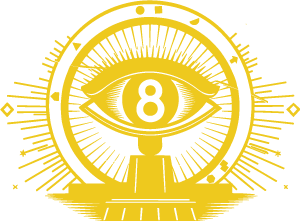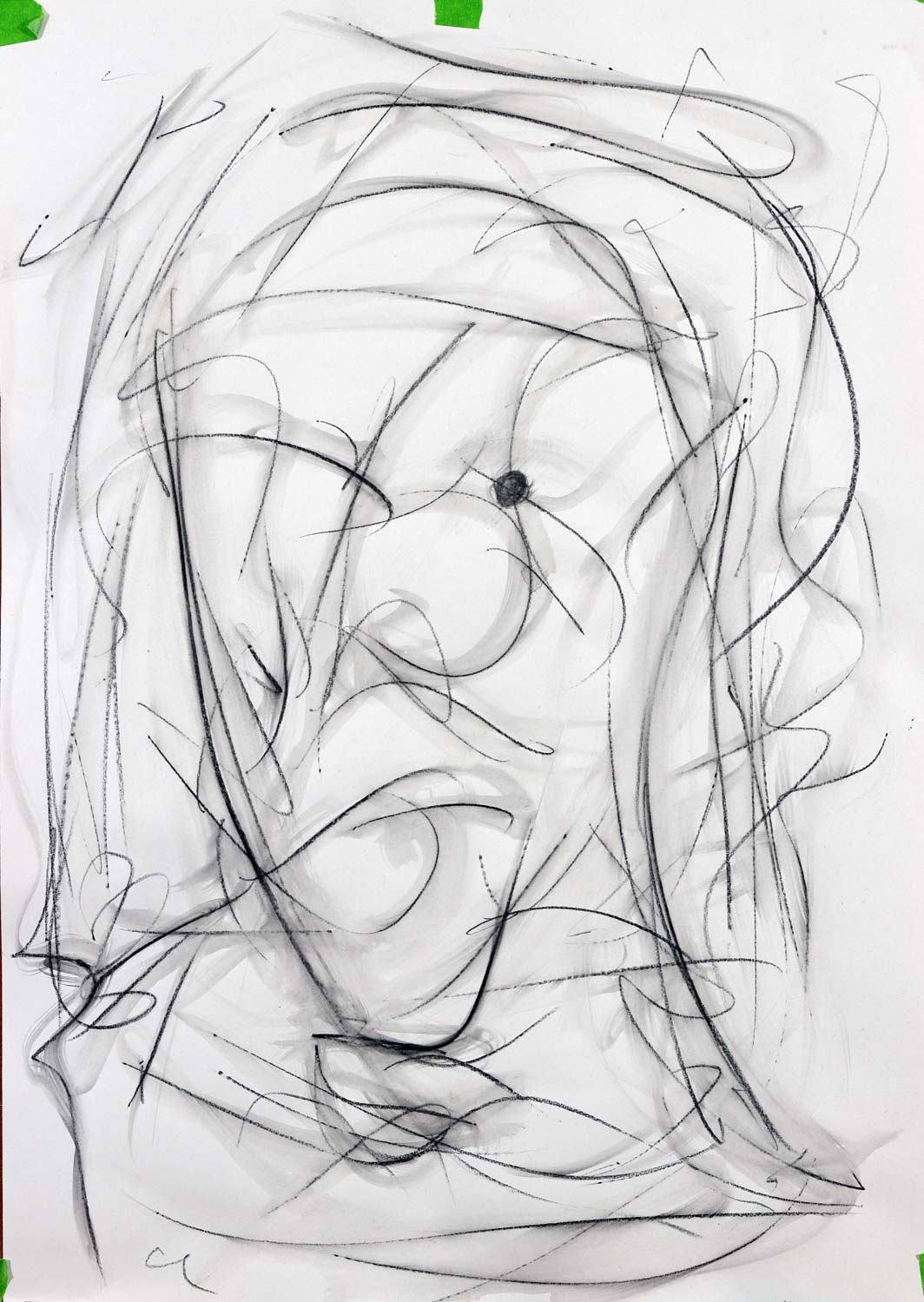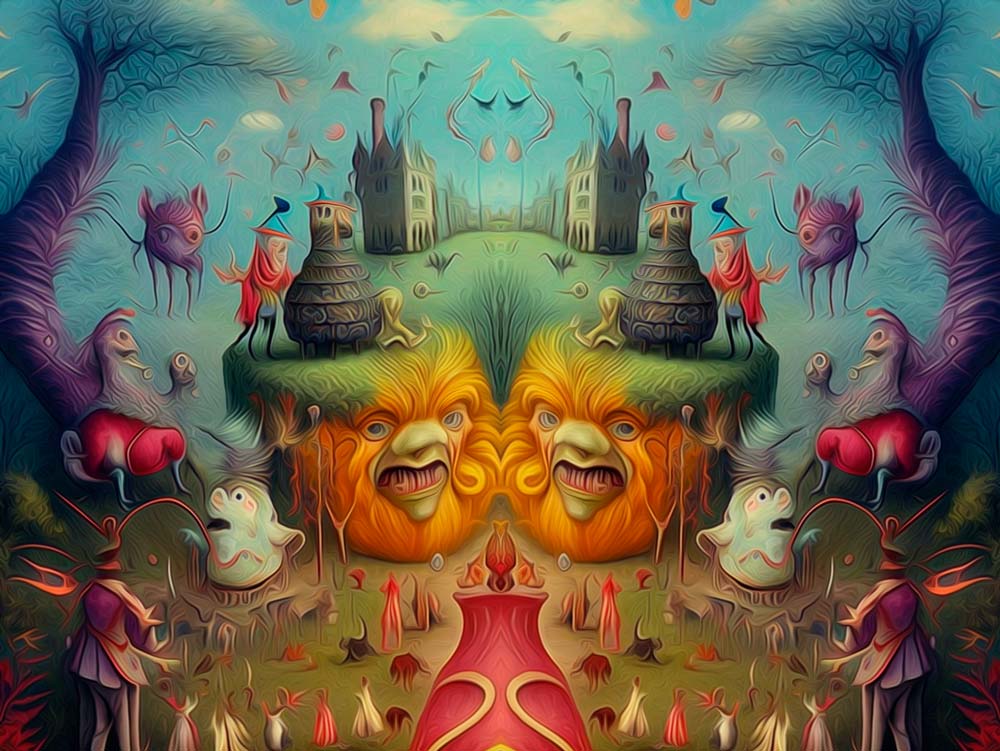

July 28
Can art serve as a gateway to the hidden realms of our psyche? As I reflect on my artistic journey, I’m struck by the profound interplay between creator, creation, and observer – a trinity bound by an invisible thread of shared consciousness.
The sun rises on this late July day, casting new light on old memories. Once again I find myself leafing through my old sketchbooks, pondering the collages I crafted in my college days. Those youthful experiments, born of exuberance and angst, now serve as portals to a past self. But what was I truly trying to achieve with these artworks?
One particular piece stands out – a dystopian tableau cobbled together from 1950s magazines. A father figure peers into a grill, his son watching, while a baby’s head impaled on a fork serves as a grotesque centrepiece. It’s a haunting image, one that speaks to the shadows lurking in our unconscious.
As Carl Jung posited, “The shadow is a moral problem that challenges the whole ego-personality, for no one can become conscious of the shadow without considerable moral effort.”1 In creating this unsettling scene, was I unknowingly grappling with my own shadow self?
The horror genre, which so captivated me in my youth, often serves as a mirror to these hidden aspects of our psyche. As the renowned film critic Robin Wood observed, “One might say that the true subject of the horror genre is the struggle for recognition of all that our civilization represses or oppresses.”2
But the true power of art lies not just in its creation, but in its reception. When a viewer encounters a piece, they bring their own psychic baggage to the interpretation. It’s a symbiotic dance, an infinity loop where artist and observer meet in the liminal space of the artwork.
This dynamic was thrown into sharp relief when I began experimenting with AI image generation. Feeding my old collages into these systems with minimal text prompts (so the AI had to ‘see’ more rather than be driven by my words), I watched in awe as the AI produced its own haunting interpretations. It was as if the machine was psychoanalysing not just the image, but me as its creator.
The process reminded me of the Rorschach inkblot test, where ambiguous images serve as a canvas for the subject’s projections. As Hermann Rorschach himself noted, “The interpretation of the form is indeed nothing else than a special case of perception.”3 In a sense, all art functions as a Rorschach test, revealing as much about the viewer as it does about the creator.
This realisation crystallised for me last year when I stumbled upon a drawer full of joker cards at The Beanstalk Secondhand Emporium (a junk shop!). The Fool in tarot tradition represents both the beginning and end of the journey, embodying infinite potential. As Rachel Pollack writes in her seminal work on tarot, “The Fool is the spirit in search of experience. He represents the mystical cleverness bereft of reason within us, the childlike ability to tune into the inner workings of the world.”4
That chance encounter opened my eyes to the true nature of my artistic practice. For over three decades, I’ve been exploring the intersection of psychology and art, creating portals for viewers to access their own inner landscapes.
Imagine, if you will, an infinity symbol. On one loop stands the artist, on the other the viewer, and at the center point where the loops meet sits the artwork. It’s a continuous flow of energy and meaning, an infinite dance between the subjective and objective experience.
In this dance, the artwork serves as a key, unlocking doors in the viewer’s psyche that they may not even know exist. It triggers associations, awakens dormant memories, and stirs the complexes that Jung described as “the living units of the unconscious psychic life.”5
As artists, we’re not just creating objects or images – we’re crafting experiences, constructing portals that invite viewers to explore the vast, uncharted territories of their own minds. It’s a profound responsibility, and an exhilarating one.
So the next time you stand before a piece of art, remember: you’re not just looking at it – you’re looking into yourself. The artwork is a mirror, a window, a doorway. Step through, and see where it leads you.
-
Jung, C.G. (1951). Aion: Researches into the Phenomenology of the Self. Collected Works of C.G. Jung, Volume 9 (Part 2). Princeton University Press.
-
Wood, R. (1979). An Introduction to the American Horror Film. In A. Britton et al. (Eds.), American Nightmare: Essays on the Horror Film. Festival of Festivals.
-
Rorschach, H. (1921). Psychodiagnostik. Ernst Bircher.
-
Pollack, R. (1980). Seventy-Eight Degrees of Wisdom: A Book of Tarot. Thorsons.
-
Jung, C.G. (1934). A Review of the Complex Theory. In The Structure and Dynamics of the Psyche, Collected Works of C.G. Jung, Volume 8. Princeton University Press.






